A new restaurant in Brooklyn, New York, has been crafted by Frederick Tang Architecture that not only sates the appetite with excellent Lebanese cuisine but gratifies the eye through outstanding design.

Nabila's foyer, photography by Gieves Anderson.
August 4th, 2022
On a bustling corner of Cobble Hill in Brooklyn, New York, a newly designed restaurant called Nabila’s, pays homage to both Lebanese cuisine and clever design. Once a former tavern, the premise has been transformed into a light, bright, contemporary space that also incorporates the old with the new and provides a place for the surrounding neighbourhood to meet, dine and relax.
The project, designed by Frederick Tang Architecture (FTA), is both sympathetic to site and heritage of the original 1886 Queen Anne-style building. Situated on a corner block, the façade wraps around the two-storey brick and timber building that is partially clad in wood with ornamental mouldings and features black and forest green awnings.

Inside the restaurant, a long, softly curved Caesarstone quartz counter arcs away from the entry and draws the eye into the space. A teal and cream tiled floor designed by India Mahdavi complements the colour palette informed by the cuisine, with eggplant purple and leafy greens, along with soft timber colours, and cream and pale lavender accents.
“We were influenced by the intricate details and use of colour in traditional Middle Eastern decorative arts and wanted to play with mixing textures and patterns of the wallpaper, tile and colours of paint,” says Barbara Reyes, FTA’s Director of Interior Design and Branding.

The floorplan has been cleverly reworked with the kitchen placed in the centre of the space, visible through a new glass brick wall designed in a Doric Neutro pattern. A counter/café has been located in front of the kitchen, and additional seating and an event space have been positioned at the back. A hallway extends along one side and provides the connectivity between areas.
The interior reflects the idea of Middle Eastern architectural motifs with arches defining and delineating spaces and creating storefront booths for casual dining. The arch has also been incorporated into shelving displays at the rear of the counter, filled with speciality grocery items.
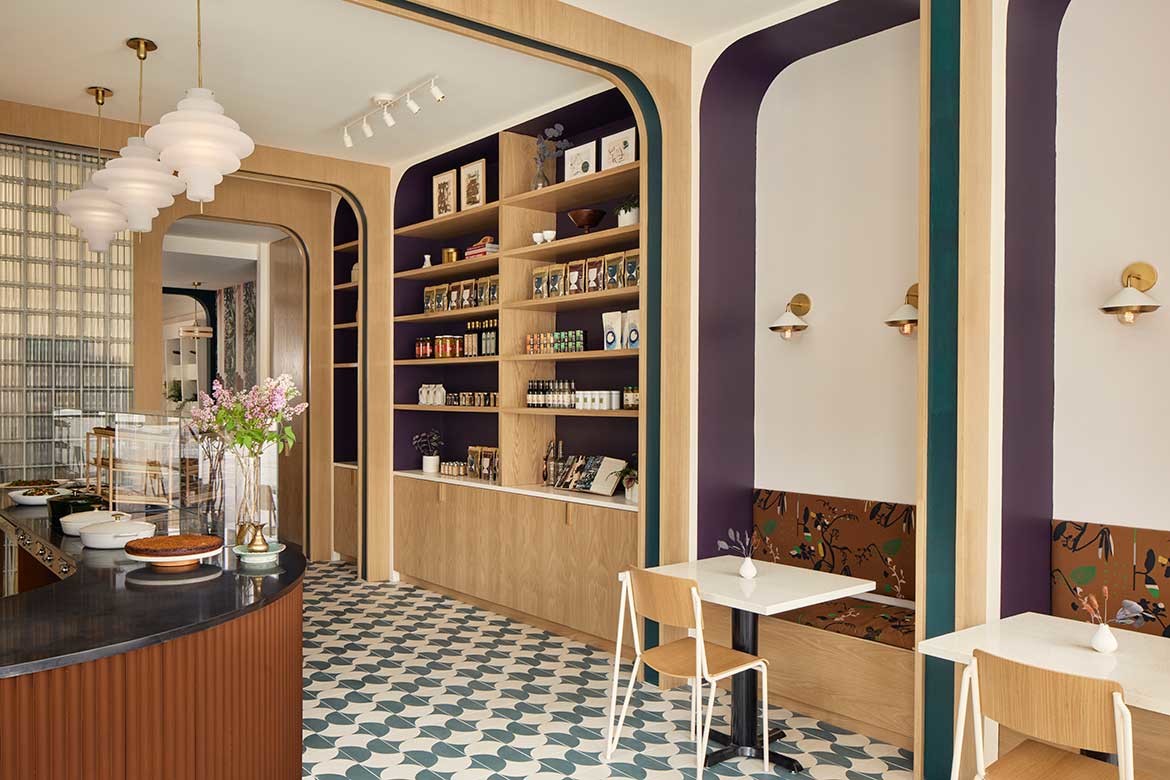
Throughout, the finishes are influenced by Lebanese art, architecture and foliage with large floral-patterned fabrics, wall coverings, mosaic tiles for texture and volcanic glass. In the front section, Tableau pendant lights by Kelly Wearstler float above the counter and stools. In the rear dining and event space, the ceiling has been wrapped in wallpaper and an antique chandelier, modernised with globe shades and a minimal base, takes centre stage. A large antique wooden bench has been adapted and wraps two sides of the room’s perimeter, evoking the idea of communal eating that is integral to Lebanese culture.
The project was a labour of love for owner Mike Farrah, who created the restaurant named after his mother and showcased her culinary expertise. Exploring his Lebanese heritage, Farrah worked collaboratively with FTA to help realise his ambitions.
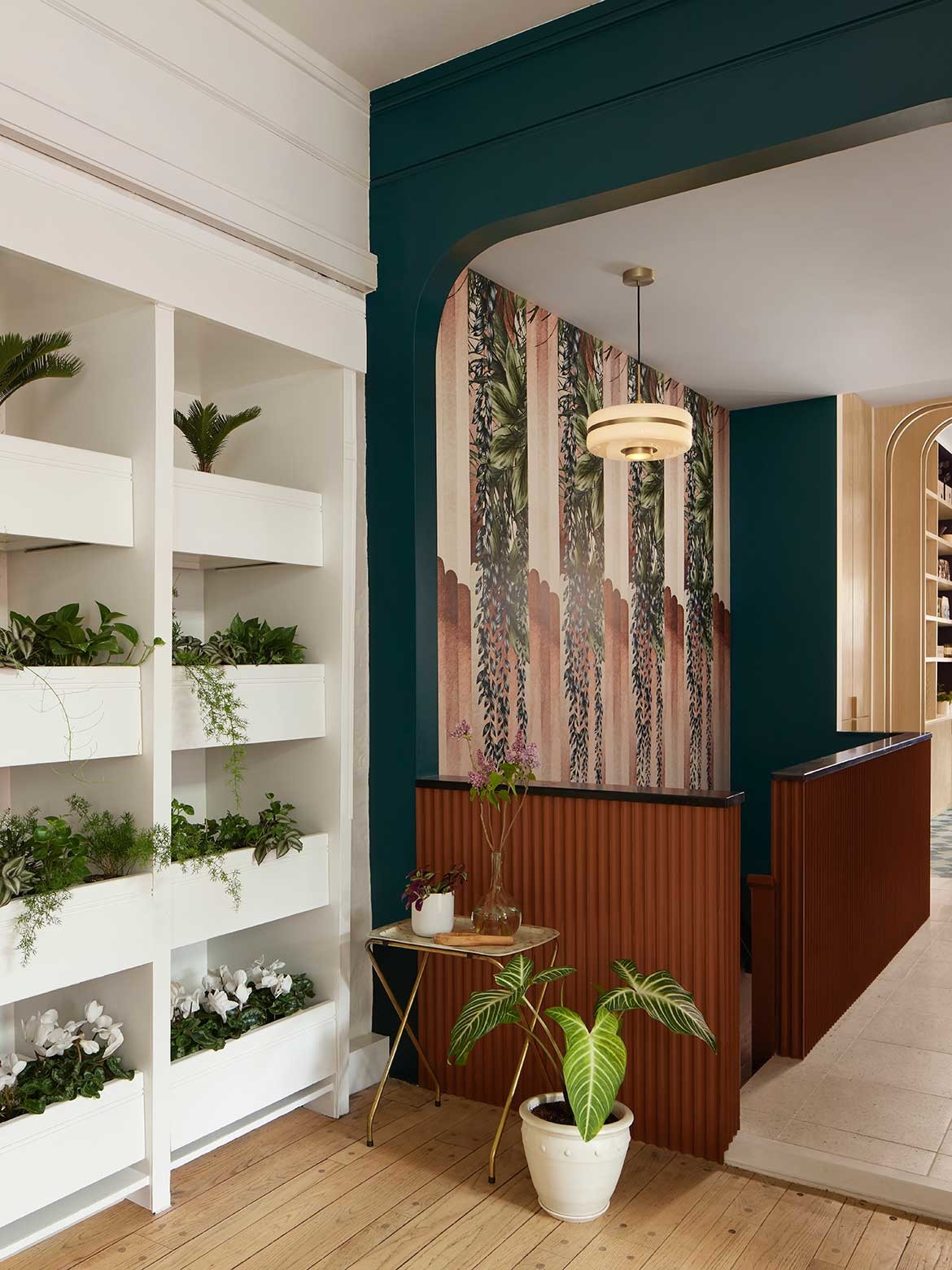
Says Frederick Tang, Director of Design, Principal Architect FTA, “Our favourite projects are ones with some historic contexts when we can create something that’s both old and new. We loved playing with some original details and inventing new ones that work with them. We were so thrilled when Mike chose this space as it was an exciting opportunity to design in a prominent corner building with beautiful light and great bones.”
FTA has created a project that is a great example of meeting and exceeding a brief. The building has been renewed with a timeless and nuanced design that speaks of its origins and that of the owner while also providing a beautiful setting for the provision of authentic and delicious food.
Frederick Tang Architecture is based in Gowanus, Brooklyn and the boutique practice provides a full array of architectural and design services to a stellar clientele. The studio approaches each project through experimentation, curiosity and collaboration and produces refined and unexpected solutions that reflect site, people and culture.
Frederick Tang Architecture
fredericktang.com
Photography
Gieves Anderson

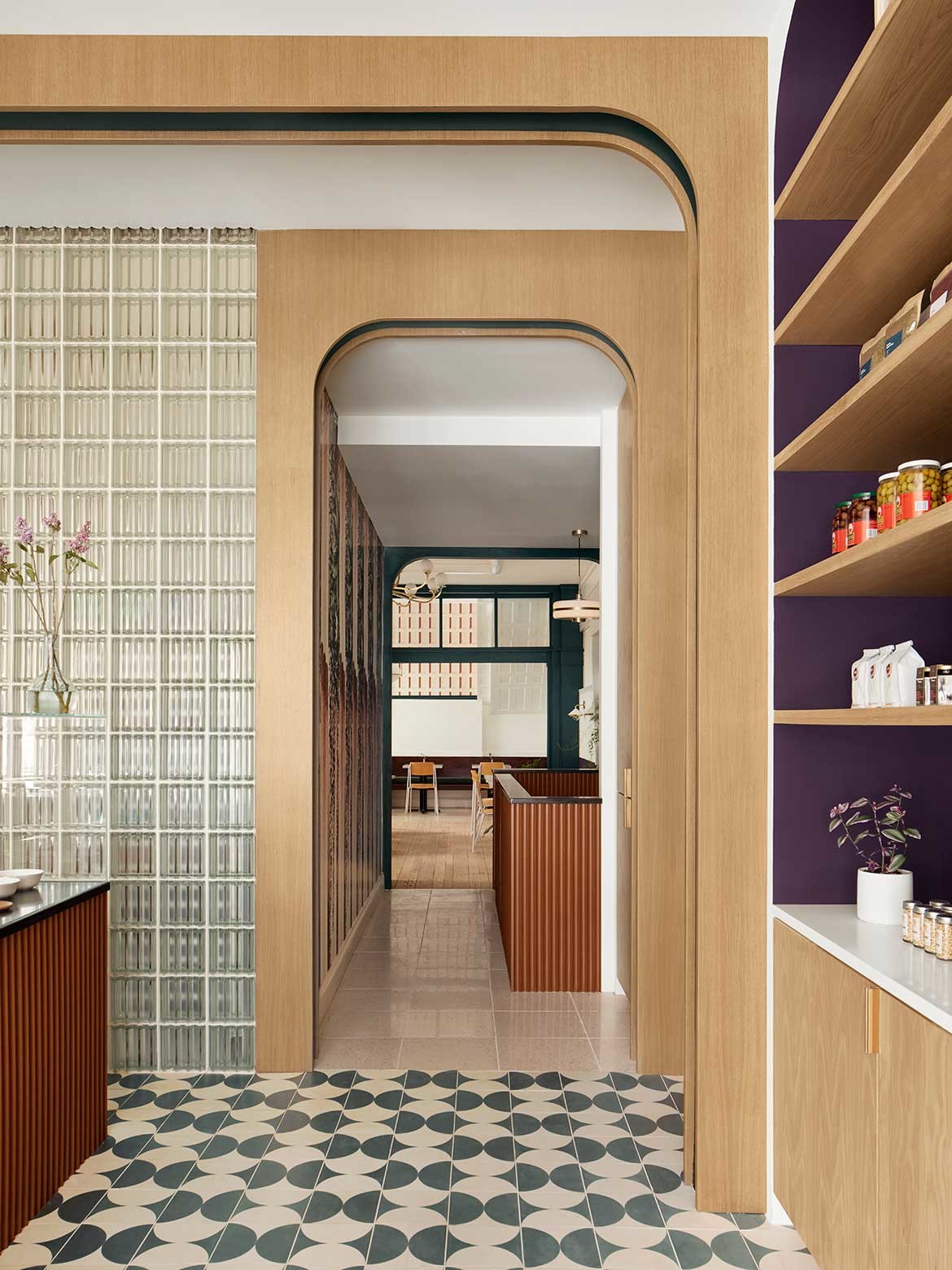



We think you might like this article about Bali Body’s latest fit-out.
INDESIGN is on instagram
Follow @indesignlive
A searchable and comprehensive guide for specifying leading products and their suppliers
Keep up to date with the latest and greatest from our industry BFF's!
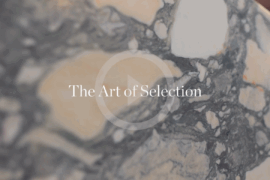
CDK Stone’s Natasha Stengos takes us through its Alexandria Selection Centre, where stone choice becomes a sensory experience – from curated spaces, crafted details and a colour-organised selection floor.

For those who appreciate form as much as function, Gaggenau’s latest induction innovation delivers sculpted precision and effortless flexibility, disappearing seamlessly into the surface when not in use.

London-based design duo Raw Edges have joined forces with Established & Sons and Tongue & Groove to introduce Wall to Wall – a hand-stained, “living collection” that transforms parquet flooring into a canvas of colour, pattern, and possibility.

Merging two hotel identities in one landmark development, Hotel Indigo and Holiday Inn Little Collins capture the spirit of Melbourne through Buchan’s narrative-driven design – elevated by GROHE’s signature craftsmanship.
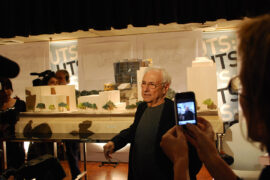
We republish an article in memory of the late architect by UTS, whose Dr Chau Chak Wing Building was Gehry’s first built project in Australia. The internationally revered architect passed away on 5th December.
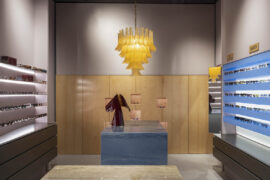
A calm, gallery-like boutique by Brahman Perera for One Point Seven Four brings contemporary luxury and craft to Strand Arcade.
The internet never sleeps! Here's the stuff you might have missed
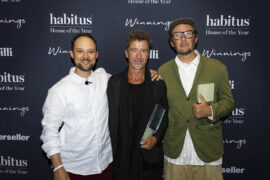
Winners of the 2025 Habitus House of the Year and Editor’s Choice Award respectively, Anthony Gill and Jason Gibney join the podcast to discuss the state of housing in Australia today.

CDK Stone’s Natasha Stengos takes us through its Alexandria Selection Centre, where stone choice becomes a sensory experience – from curated spaces, crafted details and a colour-organised selection floor.